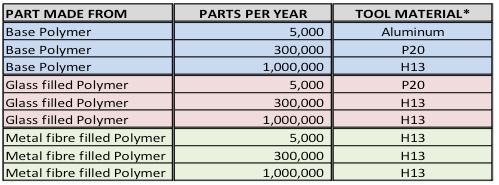When you first commissioned the mold tool for your project everything was looking good, the company were cooperative, the price was very attractive and the timescales quoted were within your expectation, great!
Production starts and the first few batches of product arrive without any major issues; all parts are fit for the intended purpose, looks like you made the right choice.
However, not everything stays like this, you start to see delays in delivery, a few quality issues are appearing and communication with the supplier is less frequent despite the attempts in contacting them to ascertain the situation.
In order to keep productions of your assembly line moving you end up reworking any ‘out of specification’ parts that the supplier sent you.
What really happened? And how to avoid it?
1. The Problem of Low Quality Molds and its Causes
In the example we described above, the supplier was very happy to quote you a low price for the tooling as you did not specify the material; therefore they quoted and subsequently made the mold tool from ‘soft steel’.
The ‘first off’ samples received for tooling sign off and start production authorization were carefully selected as ‘best in batch’, therefore, showing all dimensions within specification. These were sent to you via their preferred parcel courier because you did not have time in your busy schedule to visit the factory and check first hand.
First few production batches yielded an acceptable percentage from the factory’s point of view, they managed to pull out any obvious poor quality parts and the random inspection picked out a few more ‘out of specification’ parts. The rest of the batch was shipped to you for use on your production lines.
As more parts were being produced, the tool started to wear, resulting in parts being produced with flash, parts sticking in the mold tool during ejection, dimensionally unstable parts (due to the machine parameters being altered while trying to get good parts out of the tool).
As the tool was wearing, production of acceptable parts became more difficult; the tool required more maintenance and consequently made production more difficult. From your perspective, you experience delays in delivering to your customers with shortages on orders due to poor quality products not usable from the supplier.
Situation not looking good with shortages, reworks, and delays on parts and schedules.
We have seen this type of scenario a number of times in the past where the toolmaker has taken short cuts or has tried to maximize their profit by using a lower standard material than what they quoted and in doing so has resulted in problematic production due to premature failures or ware issues on the tool. Best thing for you as a paying customer is to get the tooling checked and verified to ensure you are getting what you are paying for.
2. Best Practices
2.1 Understand your own Requirements
From a part production aspect, you need to understand the estimated annual quantity, the polymer the part should be molded in, and the complexity of the part (are there sliders and added moving parts required in the tool to produce your part?).
Once you have this information documented you can determine what type of tool you would need in production. Table 1 shows a simplified guideline that allows you to see the different tool options based upon your product specification and volume forecasts.
Table 1: Simplified Tool Material Selection Guide
[* the materials shown in this table are just examples of Aluminum, pre-hardened P-20 steel and H13 hardened steel, for more detailed selection you should contact your toolmaker and discuss this with them]
Basically, the more abrasive the polymer and the higher volume you require, the more hardened the mold tool’s steel will need to be. Most toolmakers will be able to give good advice as long you can offer them as much information about your product as possible.
To read the rest of the best practices we recommend, request our very complete white paper on the subject!





